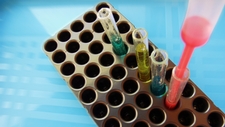Evidence-based Decision-making

TEKS Objective
The student is expected to in all fields of science, analyze, evaluate, and critique scientific explanations by using empirical evidence, logical reasoning, and experimental and observational testing, including examining all sides of scientific evidence of those scientific explanations, so as to encourage critical thinking by the student.
Essential Understanding
The student uses critical thinking and scientific problem solving to make informed decisions.
Science Background
Evidence-Based Decision-Making: Serve Center (website) - Ideas and strategies to help educators incorporate evidence-based decision-making into their own teaching and improve student motivation and achievement.
Signature Lesson
Introduction to Experimental Design: Learn NC (website) - Students learn and use experimental design vocabulary and develop critical thinking skills by reading an experiment description, analyzing the information provided, and applying empirical evidence and logic to answer questions about the experiment design and outcomes.
Introduction to Experimental Design
Learn NC, www.learnnc.org
- Supporting Lessons
- Extensions
- Assessment Ideas
- Literature Connections
- Related
TEKS - Additional Resources
Supporting Lessons
The Case of the Missing Computer Chip: Indiana University (website) - Students attempt to resolve a simulated crime by analyzing clues and evaluating evidence.
The Case of the Missing Computer Chip
Indiana University, www.indiana.edu
Elaboration Lessons and Extensions
Bias Sampling: Science NetLinks (website) - Students learn that data gathered during a scientific study can be biased or unusable if the methodology is flawed. Includes assessment and extensions.
Assessment Ideas
Have student groups design and conducts tests to compare two or three brands of the same commercial product. Then have each student write a paper that uses evidence collected during the test to identify the best product among those considered.
Literature Connections
Building Thinking Skills. Parks, Sandra (ISBN-13: 978-1601441492)
Crime Scene Detective. Schulz, Karen (ISBN-13: 978-1593630638)
Additional Resources
Critical Thinking and Reflection: Centre for Excellence in Teaching and Learning (website) - Links to quality resources that can help teachers assess and develop students’ critical thinking and reflection skills.
TEKS Navigation
Grade 4
Need Assistance?
If you need help or have a question please use the links below to help resolve your problem.

Comments